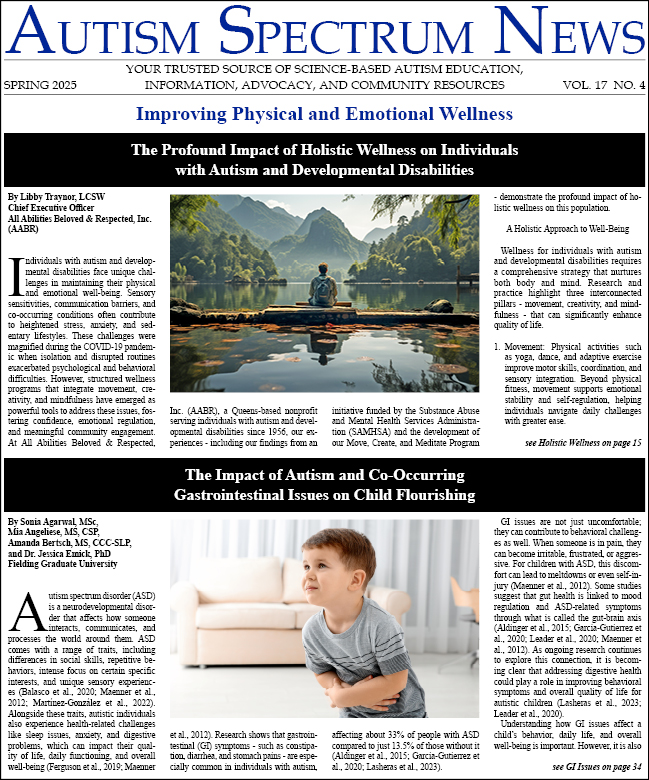-
Improving Health Care Communication for Autistic Teens
Effective communication is essential in health care for accurate diagnoses, quality patient care, and positive outcomes (Ratna, 2019). However, communication barriers can significantly impact the health care experience, particularly for individuals with autism spectrum disorder (ASD) (Saqr et al.,...
-
Navigating Mental Health and Life Transitions for Autistic Youth
Meet Josh, a 19-year-old autistic young adult who recently graduated from high school. Josh thrived in the small, structured environment of his school, where individualized support helped him focus on his interests and manage his daily routine. However, the transition to college overwhelmed him...
-
Charting New Paths to Wellbeing: Catalight’s Compass Behavioral Program Launched This Month
In an industry where a one-size-fits-all approach to treatment is too often the norm, Catalight’s new Compass Behavioral program teaches neurodivergent teens and young adults life skills that are important to them and their idea of future success. The innovative treatment option truly places the...
-
Addressing Mental Health Challenges for Neurodivergent Youth
Youth mental health is a critically important topic that seems to be having a much-needed moment in the spotlight - like here in New York, where Gov. Kathy Hochul announced a $1 billion investment in a plan that may well transform the future of mental health in this state. Even Hollywood is...
-
Supporting Teens and Adults in Becoming the Best Self-Advocate They Can
The creation of self-advocacy is a story that is one of pioneering and revolution dating back as far as 1968 (Glumbić et al., 2022). Today, many self-advocacy organizations target elevating neurodiverse voices and providing space for neurodiverse individuals to advocate for themselves. The current...
-
Autism and Adolescence: For Many, the Most Challenging Time of Life
It is a well-known conventional wisdom that adolescence, or the teenage years, are a difficult time of life for everybody and that this has probably been the case since time immemorial. It is equally well known in the autism community that middle school (or, as it was known in my day, junior high...
-
Supporting Adolescents with Autism Using Technology to Interact with Peers
Friendships are a vital part of adolescence. Friends provide advice and help with navigating through tough topics. As children grow into adolescence, they begin to rely more on the opinions of friends than parents to make sense of the world. Thus, adolescent friendships are an important resource...
-
Supporting the Transition to Employment for Adolescents with Autism
Graduating from high school and transitioning to the world of work is an extremely important and exciting milestone. However, for many young adults with autism obtaining and maintaining employment can present some unique challenges. Unfortunately, despite the vastly increasing numbers of...
-
Tools for Growth: Facilitating Community Living Skills Opportunities in Preparation for Independent Living
Graduating high school, going to college, finding an apartment, landing that first job, getting married - these are all exciting milestones associated with the transition from high school to independent living. For adolescents with autism, formal planning for this transition begins at age 14 with...
-
Maintaining Connection with Siblings with ASD in Young Adulthood
Sibling relationships are some of the longest that people will have in their lifetime, and these relationships can significantly influence sibling development (McHale, Updegraff, & Whiteman, 2012). While each sibling relationship is different, they are commonly characterized by shared...




